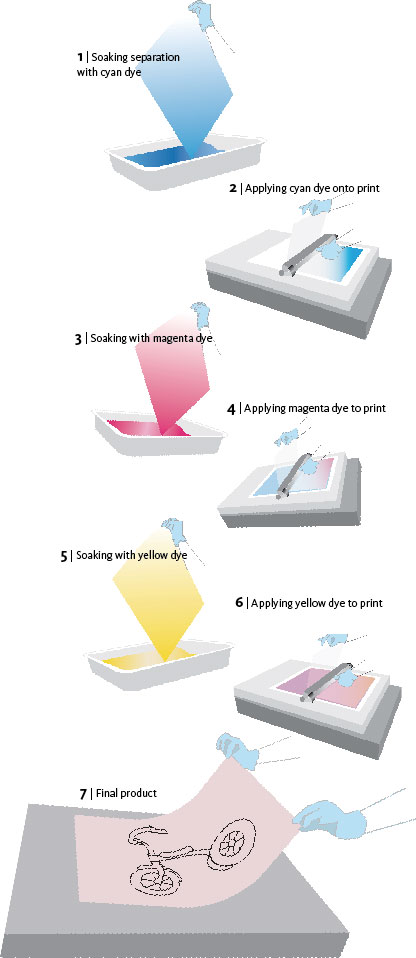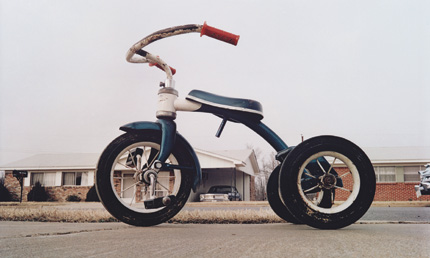By Whitney Stoepel, lnfographic by Jee In Park.
The dye transfer process used by William Eggleston to produce prints achieves a richness of colors and control over the image unrivalled by other photographic methods. Pre-cursors of this method date back to the late 19th century; and, it was commercially popularized by Kodak in the 1930s and 40s. In pre-digital days, the process was often reserved for commercial photography and advertising because of the expense and labor-intensive nature of the process; however, it did increase in use amongst artists following Eggleston’s 1976 MoMA show.
At the most basic level, this process requires the photographer to make three separate negatives using red, green and blue filters. These negatives are exposed to make three positive relief separations on film, which are then soaked respectively in a cyan, a magenta and a yellow dye. These dyes are then applied to paper with a squeegee to produce a print. The fact that each negative is worked with individually means that greater control can be exercised over the final result and a more-nuanced image with more detail and a wider color range can be achieved — enabling the photographer to come closer to what can be seen by the human eye.
SOURCES: www.dyetransfer.de; Eliot Porter Collection Guide website of the Amon Carter Museum









[…] W. ‘The Dye-Transfer Process’ [online] http://fnewsmagazine.com/2010/04/the-dye-transfer-process/ [13th November […]